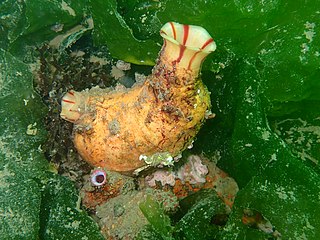
Pyuridae is a family of tunicates.

Diazonidae is a family of sea squirts belonging to the order Aplousobranchia.
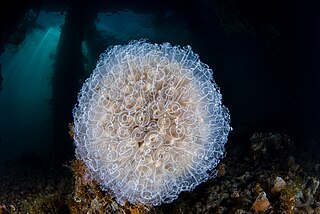
Clavelina lepadiformis, common name the light-bulb sea squirt, is a colonial sea squirt native to the NE Atlantic Ocean.
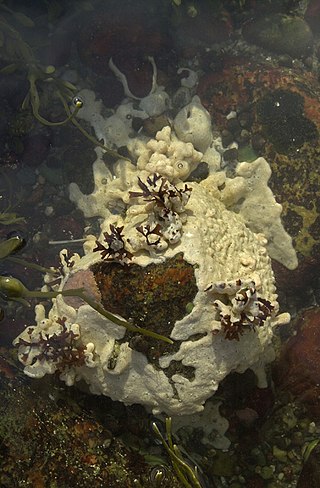
Aplousobranchia is an order of sea squirts in the class Ascidiacea, first described by Fernando Lahille in 1886. They are colonial animals, and are distinguished from other sea squirts by the presence of relatively simple pharyngeal baskets. This provides the etymology of their name: in ancient greek, ἁ.πλοος-ους (ha.ploos-ous) means "simple". The posterior part of the abdomen contains the heart and gonads, and is typically larger than in other sea squirts.
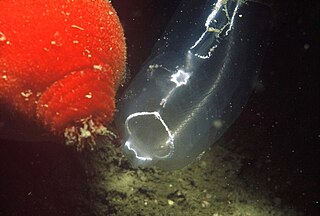
Clavelina sabbadini is a species of tunicate, in the genus Clavelina. Like all ascidians, these sessile animals are filter feeders.

Pycnoclavella diminuta, known as the white-spotted sea squirt, white-spot ascidian, and white-spotted ascidian, is a species of tunicate, in the genus Pycnoclavella. Like all ascidians, these sessile animals are filter feeders.

Nephtheis fascicularis, commonly called the lollipop tunicate, lollipop coral, or blue palm coral, is a species of tunicate that is native to the shallow reefs of Indonesia. It is the only species in its genus Nephtheis. They are not photosynthetic, and live on plankton and small organic particles obtained from the water currents. The branched stems are formed by tiny polyps called zooids. Despite their name and appearance, they and other sea squirts are unrelated to true corals.
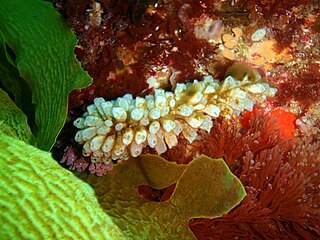
Clavelina cylindrica is a species of tunicate in the genus Clavelina. It is found in shallow waters around Australia.

Diazona violacea is a species of tunicate, an ascidian in the family Diazonidae. It is the type species of the genus Diazona.
Berillia is a genus of ascidian tunicates in the family Styelidae. The only species is Berillia boltenioides.
Botryllocarpa is a genus of ascidian tunicates in the family Styelidae.

Metandrocarpa is a genus of ascidian tunicates in the family Styelidae.
Oligocarpa is a genus of ascidian tunicates in the family Styelidae.
Bathypyura is a genus of ascidian tunicates in the family Pyuridae.
Bolteniopsis is a genus of ascidian tunicates in the family Pyuridae.
Claudenus is a genus of ascidian tunicates in the family Pyuridae.
Ctenyura is a genus of ascidian tunicates in the family Pyuridae.
Culeolus elegans is a species of ascidian tunicates in the family Pyuridae. It is found in New Caledonia.
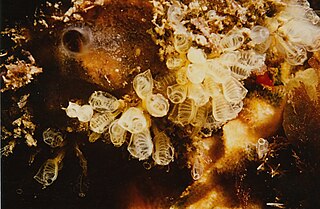
Pycnoclavella is a genus of sea squirts first circumscribed by Walter Garstang in 1891. The generic name comes from the Ancient Greek πυκνός (puknós) meaning "closely united". In 1990, Patricia Kott placed Pycnoclavella in its own family, Pycnoclavellidae, but in 2008 it was moved back to Clavelinidae.
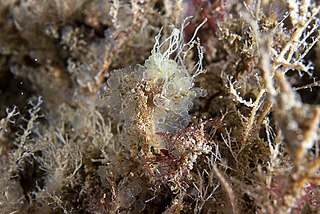
Perophora listeri is a species of colonial sea squirt in the genus Perophora, native to the North Atlantic.











